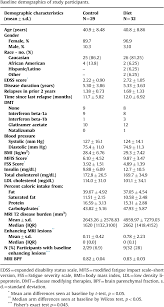
A vegan school meal is a vegetarian or vegan-friendly meal that is served to school children. These school lunches may be called "vegan school meals" or "vegan hot sandwiches". These meals may be offered by some school districts as part their regular menu. There are many reasons that you can offer vegan food as a meal option to your students.
Plant-Based School Kitchens
There is a growing demand for vegan school kitchens due to increasing awareness about the health benefits of a plant-based diet. These kitchens aim to provide healthy and nutritious meals for students. A survey revealed that 81% percent of parents would like more vegetarian options for their children’s school lunchboxes. Plant-based diets not only protect young people's bodies but also improve their academic performance.
The Our Lady of Sion School, Worthing, West Sussex has established a plant-friendly school kitchen. Plant-Based School Kitchens has partnered up with the school to offer vegan lunch options for students. The Vegan Society will support students by allowing them to choose from the hot menu. The kitchens also offer a variety of vegan desserts.

East End Community School
East End Community Schools is a vegan school. The meals at East End Community School are plant-based, contrary to its name. The school serves diverse communities, including low-income families and immigrants. It meets the state's 40 percent free lunch threshold and can announce good morning in 23 different languages. A green roof has been installed at the school, which is also committed to protecting the environment.
Portland's food service manager is updating its lunch menu with more vegan options. Parents of children who are allergic to animal products called for better options. With this in mind, McLucas and her team created a vegan menu that caters to the specific needs of kids with dietary restrictions. Launch of the new menu is scheduled for September.
Hagaskolan
The Hagaskolan vegan school is one of the first schools of its kind in the Nordic countries. It educates students between the ages of six and fifteen. It employs more then twenty staff members, and provides 100% vegan meals. In addition, the school also operates a vegan daycare. Its curriculum focuses on sustainability, health, and ethical principles.
Sarah Brown, who founded the Hagaskolan back in 1982, is the Hagaskolan's founder. It was originally called the Cordon school, but it became vegan in 2015. Its programs helped create a vegan cafeteria and promote nutrition education in schools. However, despite the benefits, there are still some questions about veganism.

Mondays without meat
New York City schools will now offer Meatless Monday at all its schools. The City believes every child should have access to healthy and culturally relevant meals at school. This initiative is a crucial step towards making that happen. Pamela Koch from the Laurie M. Tisch Center for Food Education and Policy of Teachers College at Columbia University says it is crucial to expand Meatless Monday to all schools so that all students have access nutritious and culturally acceptable meals.
Meatless Mondays is an extension to the City’s Free School Lunch for All initiative. This provides free breakfast and lunch for all students in public schools. Since 2017, the program has provided more than 150 million meals to city students. Through the Summer Meals program, all New Yorkers below 18 years old can receive free meals from the DOE during summer. Additionally, many schools are implementing Meatless Mondays in order to reduce their environmental footprint.
FAQ
What is the best diet for me?
There are many factors that influence the best diet, including your gender, age, weight, health condition, lifestyle, and personal preferences. It is also important to think about how much energy you use during exercise and whether you like low-calorie foods.
Intermittent fasting may be a good choice if you want to lose weight. Intermittent eating means you only eat specific meals throughout the day. It's not like three big meals. You may find that this method works better for you than traditional diets that include daily calorie counts.
Some studies suggest that intermittent fasting may improve insulin sensitivity and reduce inflammation, which can lead to improved blood sugar levels and reduced risk of diabetes. Some research also suggests that intermittent fasting might promote fat loss, and improve overall body composition.
How does weight change with age?
How can I tell if my bodyweight changes?
When there is more muscle mass than fat, weight loss can occur. This means that daily energy needs must be greater than the calories consumed. Activity levels are the most common reason for weight loss. Other reasons include poor eating habits, stress, hormone imbalances, certain medications and illness. When there is more fat than muscles, it's called weight gain. It occurs when people eat more calories each day than they use. Common reasons include overeating, increased physical activity, and hormonal changes.
Our bodies lose weight mainly because we consume less calories than what we burn. The main reason we lose weight is because we exercise more often. This increases our metabolism rate and burns more calories each day. However, this doesn't mean that we'll necessarily get thinner; what matters is whether or not we're losing fat or gaining muscle. If we are burning more calories than what we eat, then we will lose weight. If we consume more calories that we burn, then we are actually storing them in fat.
As we age, we become less agile and don't move as often. We also tend to consume less food than when we were younger. Therefore, we tend to put on weight. However, our muscle mass is more important than our actual size.
If you don't weigh yourself every week, there's no way of knowing how much weight have you lost. There are many methods to measure your weight. There are many ways to measure your weight. You can check your waist, hips, thighs, arms and legs. Some prefer to use bathroom scales, while others prefer tape measures.
To track your progress, weigh yourself once a week. Measure your waistline once per month. To see how far you have come, you can take photos of yourself every few month.
Online data can be used to determine your weight. For example, if your height is 5'10", and your weight is 180 pounds, then you'd probably be 180 pounds.
What are 5 ways to live a healthy lifestyle?
Are there 5 ways to have a healthy lifestyle?
Living a healthy lifestyle involves eating right and exercising regularly. Good eating habits include avoiding processed foods, sugar, unhealthy fats, and avoiding junk food. Exercise strengthens your muscles and helps you lose calories. Sleeping enough can improve memory and concentration. Stress management helps reduce anxiety and depression. Fun keeps us vibrant and young.
How do I determine what's good?
Your body is your best friend. When it comes to your body's needs for exercise, food, or rest, it is the best. Your body will tell you what to do so that you don't go overboard. Listen to your body and make sure you're doing everything you can to stay healthy.
How to measure body weight?
A Body Fat Analyzer will give you the most accurate measurement of body fat. These devices are used for measuring the percentage of body fat in people who want to lose weight.
How often do I need to exercise?
A healthy lifestyle requires regular exercise. However, there isn't a set amount of time you must spend working out. It is important to find something you enjoy, and then stick with it.
You should aim to do 20-30 minutes of moderate intensity exercise three times per week. Moderate intensity means you'll be breathing hard long after you're done. This type is good for burning around 300 calories.
You can walk for 10 minutes every day if that is what you prefer. Walking is low-impact and easy on your joints.
Jogging is an alternative to running. You can do it for as little as 15 minutes each day. Running is an excellent way to lose weight and tone your muscles.
You can start slow if you are new to exercise. Start with just 5 minutes of cardio a few times a week. Gradually increase your cardio time until you reach the goal.
Exercise: Is it good or bad for immunity?
Exercise is good for your immune system. Exercise increases white blood cell production, which helps fight off infection. You can also eliminate toxins from the body. Exercise can prevent heart disease, cancer, and other diseases. It can also lower stress levels.
Exercising too frequently can make your immune system weaker. You can cause muscle soreness by working out too hard. This causes inflammation and swelling. To fight infection, your body will produce more antibodies. This can lead to allergic reactions and other autoimmune disorders.
So, don't overdo it!
Statistics
- WHO recommends consuming less than 5% of total energy intake for additional health benefits. (who.int)
- According to the 2020 Dietary Guidelines for Americans, a balanced diet high in fruits and vegetables, lean protein, low-fat dairy and whole grains is needed for optimal energy. (mayoclinichealthsystem.org)
- According to the Physical Activity Guidelines for Americans, we should strive for at least 150 minutes of moderate intensity activity each week (54Trusted Source Smoking, harmful use of drugs, and alcohol abuse can all seriously negatively affect your health. (healthline.com)
- This article received 11 testimonials and 86% of readers who voted found it helpful, earning it our reader-approved status. (wikihow.com)
External Links
How To
27 Steps to a Healthy Lifestyle when Your Family Buys Junk Food
The most common way to eat healthy is to cook at home. However, this is often difficult because people do not know how to prepare healthy meals. This article will give you some tips on how to make healthier choices when eating out.
-
Look for restaurants that offer healthy choices.
-
Order salads before you order any meat dishes.
-
Ask for sauces made without sugar.
-
Avoid fried items.
-
Request grilled meats instead of fried ones.
-
Don't order dessert unless your really need it.
-
You must ensure that you have something more to eat after your dinner.
-
Take your time and chew slowly.
-
Drink plenty of water while eating.
-
Don't skip breakfast and lunch.
-
Include fruit and vegetables with every meal.
-
Consume milk and not soda.
-
Try to avoid sugary drinks.
-
Reduce the salt content of your diet.
-
Try to limit your frequent visits to fast-food restaurants.
-
Ask someone to join you if you cannot resist temptation.
-
Do not let your kids watch too much TV.
-
Keep the television off during meals.
-
Do not consume energy drinks.
-
Take regular breaks at work.
-
Get up early in the morning and exercise.
-
Get active every day.
-
Start small, and work your way up.
-
Set realistic goals.
-
Be patient.
-
Exercise even if it's not your favorite thing to do.
-
Positive thinking is key.